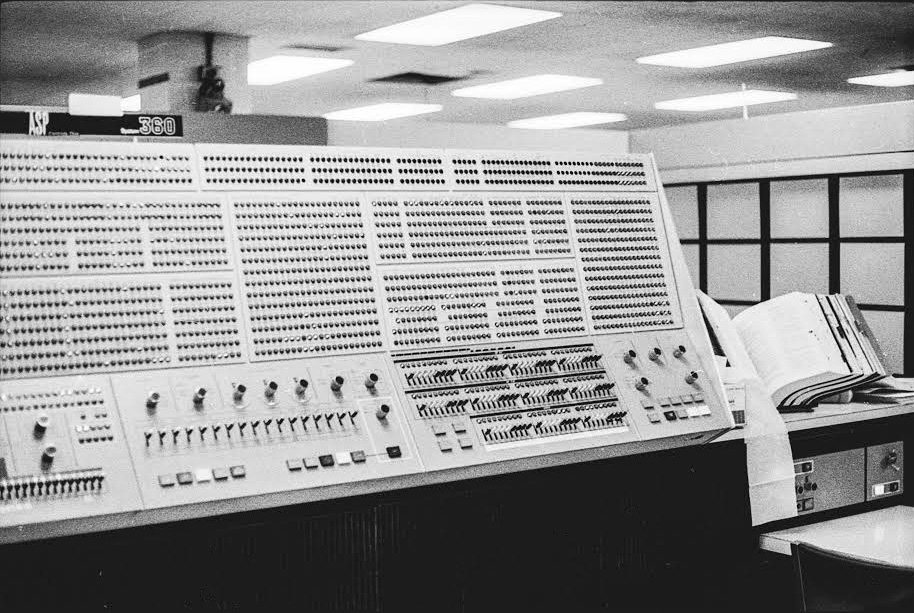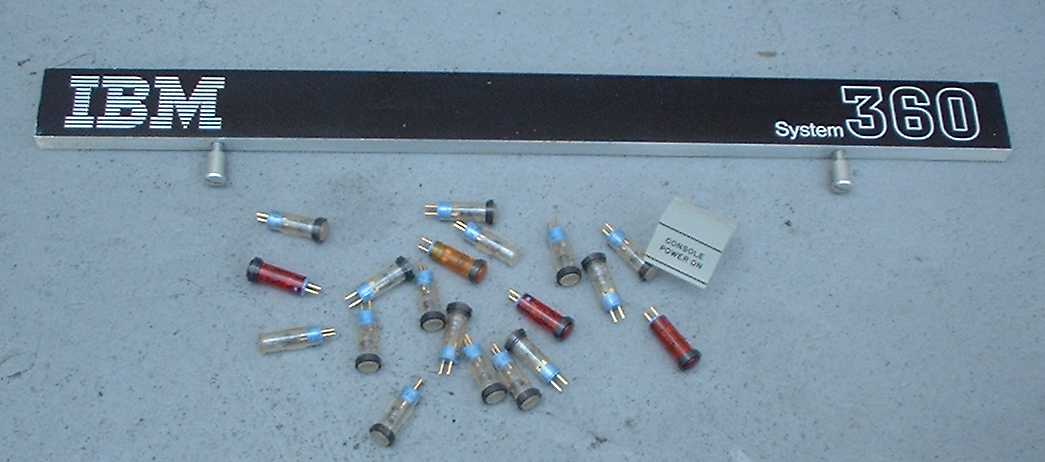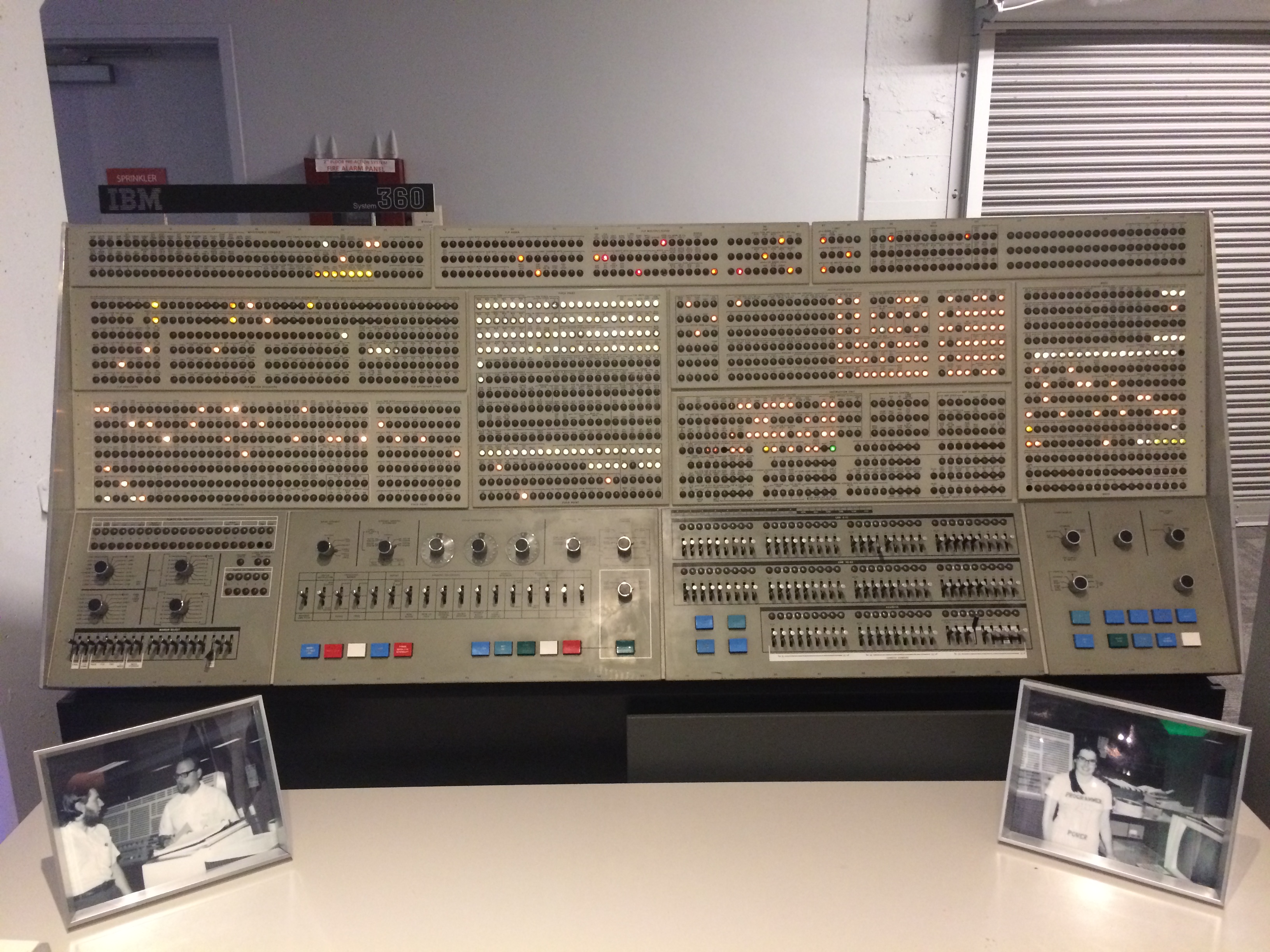The IBM 360/91
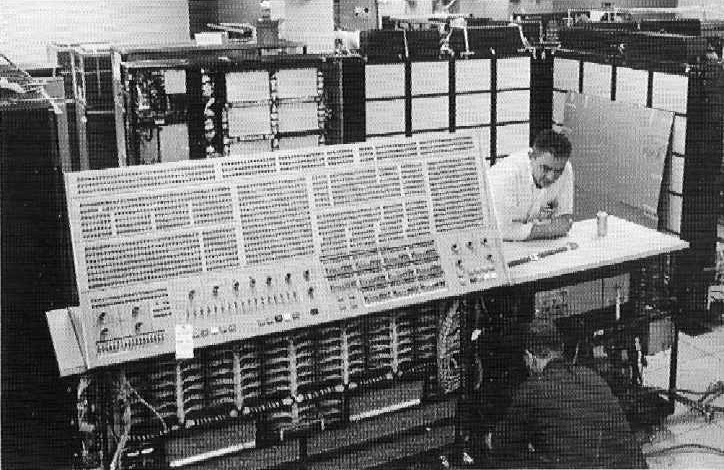
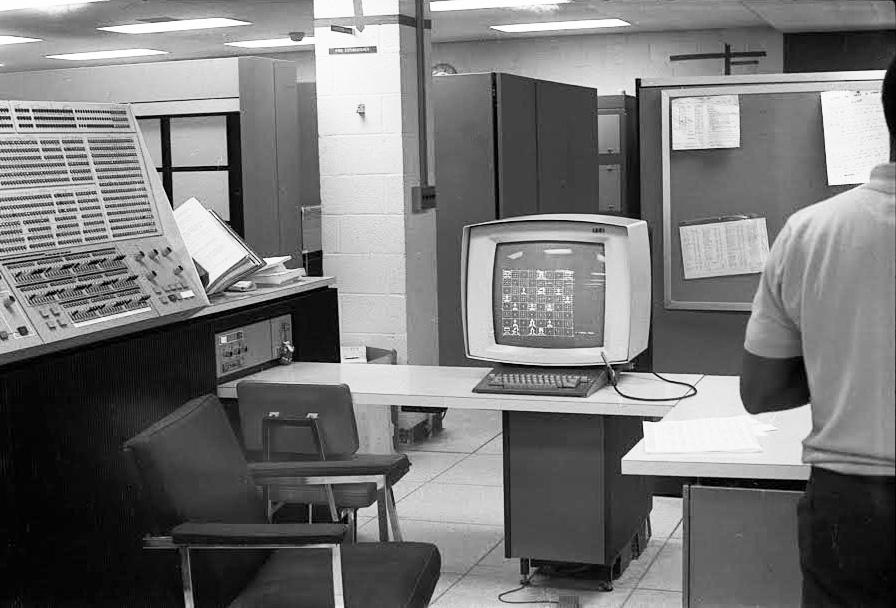

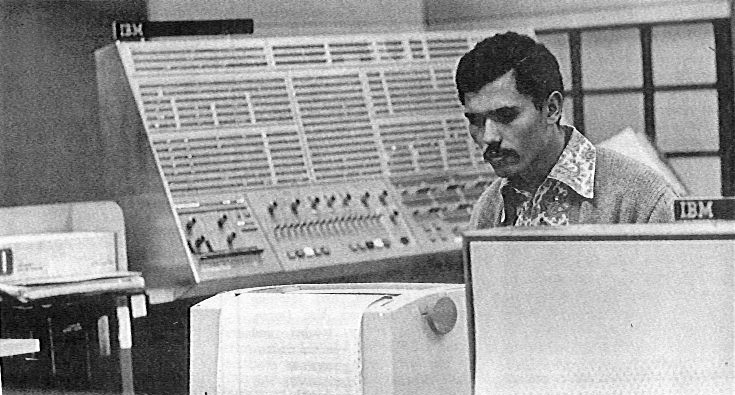
|
| Luis Ortega at Columbia's 360/91 console in 1971. Photo: [42]. |
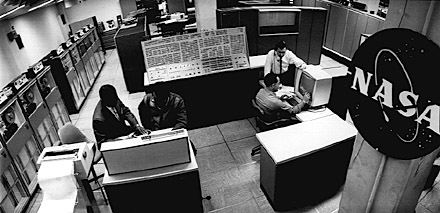 From the
IBM
Photo Archive:
"This wide-angle view of the multiple control consoles of the IBM System/360
Model 91 shows the nerve center of the fastest, most powerful computer in
operation in January 1968. It was located at NASA's Space Flight Center in
Greenbelt, Md."
From the
IBM
Photo Archive:
"This wide-angle view of the multiple control consoles of the IBM System/360
Model 91 shows the nerve center of the fastest, most powerful computer in
operation in January 1968. It was located at NASA's Space Flight Center in
Greenbelt, Md."

|
| Click to see configuration diagram |
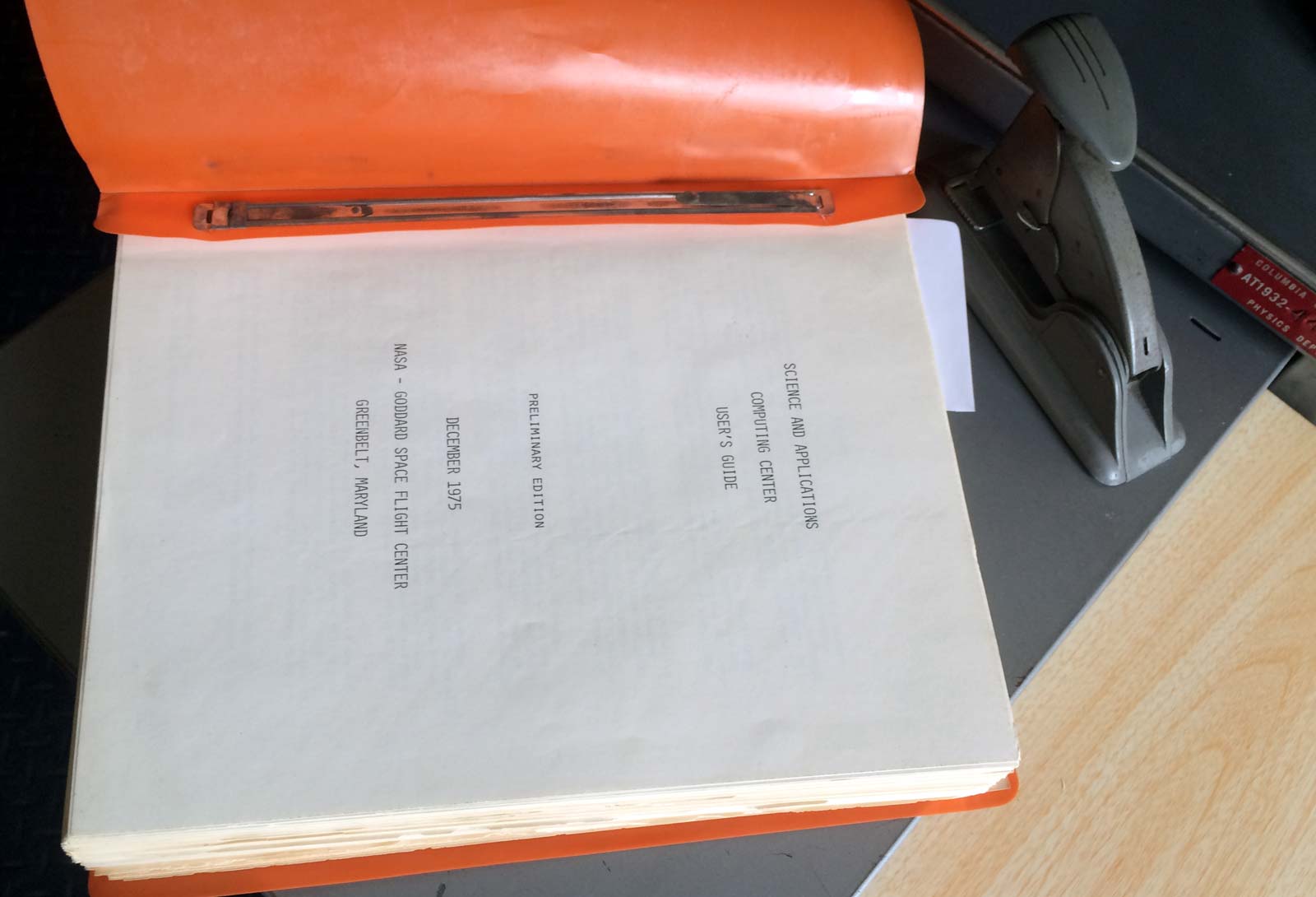
|
From the IBM History Website:
The IBM System/360 Model 91 was introduced in 1966 as the fastest, most powerful computer then in use. It was specifically designed to handle high-speed data processing for scientific applications such as space exploration, theoretical astronomy, subatomic physics and global weather forecasting. IBM estimated that each day in use, the Model 91 would solve more than 1,000 problems involving about 200 billion calculations.The system's immense computing power resulted from a combination of several key factors, including advanced circuits that switched in billionths of a second, high-density circuit packaging techniques and a high degree of "concurrency," or parallel operations.
To users of the time, the Model 91 was functionally the same as other large-scale System/360s. It ran under Operating System/360 -- a powerful programming package of approximately 1.5 million instructions that enabled the system to operate with virtually no manual intervention. However, the internal organization of the Model 91 was the most advanced of any System/360.
Within the central processing unit (CPU), there were five highly autonomous execution units which allowed the machine to overlap operations and process many instructions simultaneously. The five units were processor storage, storage bus control, instruction processor, fixed-point processor and floating-point processor. Not only could these units operate concurrently, they could also perform several functions at the same time.
Because of this concurrency, the effective time to execute instructions and process information was reduced significantly.
The Model 91 CPU cycle time (the time it takes to perform a basic processing instruction) was 60 nanoseconds. Its memory cycle time (the time it takes to fetch and store eight bytes of data in parallel) was 780 nanoseconds. A Model 91 installed at the U.S. National Aeronautics & Space Administration (NASA) operated with 2,097,152 bytes of main memory interleaved 16 ways. Model 91s could accommodate up to 6,291,496 bytes of main storage.
With a maximum rate of 16.6-million additions a second, NASA's machine had up to 50 times the arithmetic capability of the IBM 7090.
In addition to main memory, NASA's Model 91 could store over 300 million characters in two IBM 2301 drum and IBM 2314 direct access storage units. It also had 12 IBM 2402 magnetic tape units for data analysis applications, such as the processing of meteorological information relayed from satellites. Three IBM 1403 printers gave the system a 3,300-line a minute printing capability. Punched card input/output was provided through an IBM 2540 card read punch.
The console from a Model 91 has been preserved in the IBM Collection of Historical Computers, and is exhibited today in the IBM Technology Gallery in the company's corporate headquarters in Armonk, N.Y.
The console of Columbia University's 360/91 is in storage at the Computer History Museum, 1401 N. Shoreline Blvd, Mountain View, California.
Here's an excellent photo of the 360/91 console and 2250 display, just like ours at Columbia, but this is not Columbia (I believe it is NASA because I found a thumbnail of the same picture HERE). See how the console dwarfs the puny humans.
Here's a May 2003 shot of the last remnants of our 360/91 — the console nameplate (visible in the Luis Ortega photo above), the console power switch, and assorted lamps, shown just before they were sent to the new Computer History Museum to be reuinited with the rest of our 360/91 console.
Semifinally, here's a shot of Columbia's 360/91 control panel in "deep storage" in the Computer Museum's Moffet Field facility, before relocating to Mountain View in June 2003:
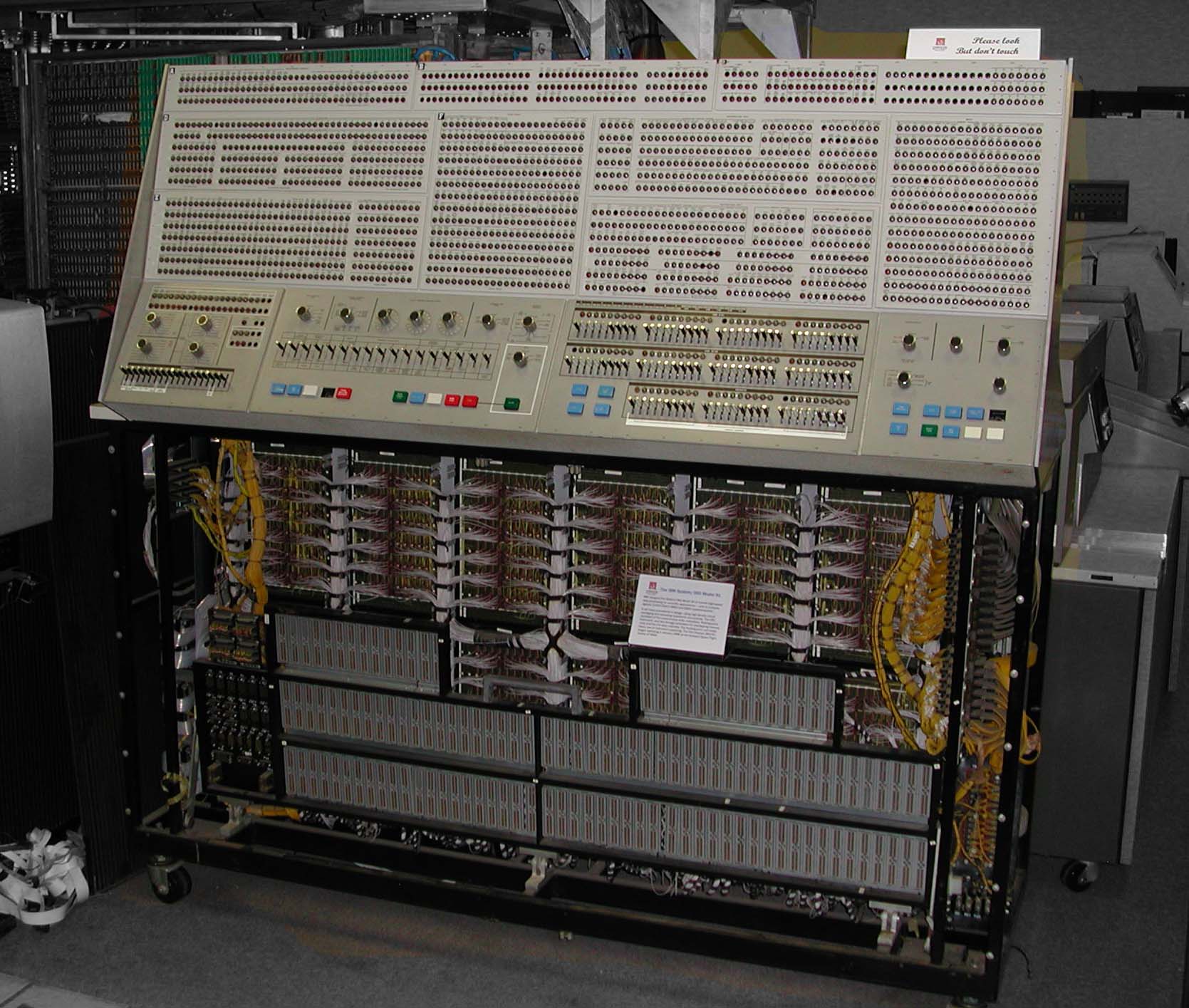
And finally, look what I found on Mayday 2015 at Paul Allen's Living Computer Museum (formerly PDP Planet):
Amazing. Look: lights! It was referenced from this page (don't count on the link lasting for any amount of time).
Bonus photo:
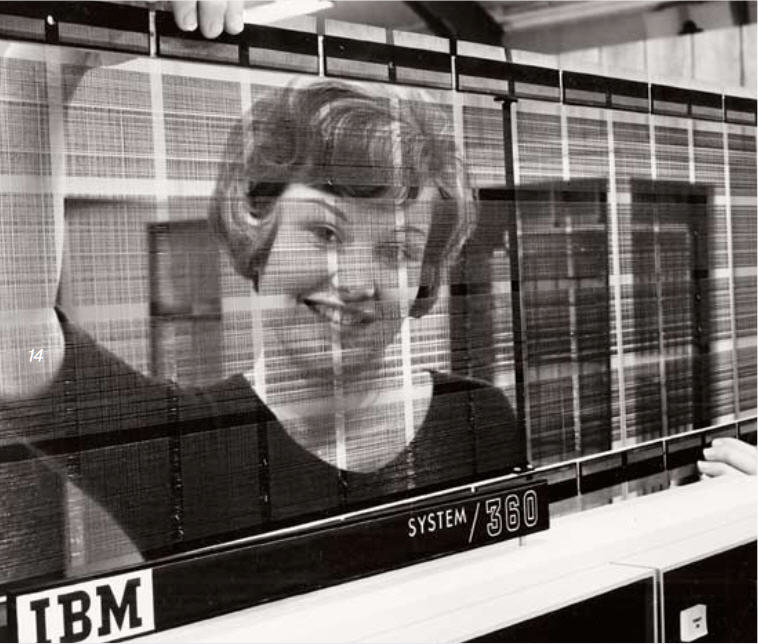
|
| IBM core memory |
Links:
- Another view of our 360/91 console
- Diagram of Operator Intervention Controls and Indicator Lights
- Recollections of 1968-70 (mainly apropos of Columbia's 360/91), Elliott Frank.
- IBM 360/370/3090/390 Model Numbers
- System 360 - From Computers to Computer Systems, IBM 100, accessed 26 December 2019.
- IBM 360/370/3090/390 Model Numbers, Lars Poulson: The 360/91 was "the first pipelined processor. Fully hardwired. Most of the decimal instructions were missing (emulated in software). Because it had multiple instruction execution units, it had 'imprecise interrupts'. When an interrupt or an exception occurred, the program counter might not point to the failing instruction if the multiple execution units were all active at the same time. For this reason, it was advisable to put NOPs around instructions that might lead to exceptions. Not many of these were built, and they may all have had slightly different tweaks as each of them was successively hand built by the same engineering team."
Translations of this page courtesy of...
| Language | Link | Date | Translator | Organization or Link |
|---|---|---|---|---|
| Belarusian | Беларуская | 2023/08/22 | Vladyslav Byshuk | Владислав Бишук | studycrumb.com |
| Finnish | Suomi | 2023/08/31 | Kerstin Schmidt | writemyessay4me.org |
| French | Français | 2023/08/24 | Kerstin Schmidt | prothesiswriter.com |
| German | Deutsch | 2023/08/24 | Kerstin Schmidt | writemypaper4me.org |
| Italian | Italiano | 2023/08/31 | Kerstin Schmidt | admission-writer.com |
| Polish | Polski | 2023/08/24 | Kerstin Schmidt | justdomyhomework.com |
| Russian | Русский | 2023/08/22 | Vladyslav Byshuk | Владислав Бишук | skyclinic.ua |
| Spanish | Español | 2023/08/31 | Kerstin Schmidt | pro-academic-writers.com |
| Ukrainian | Українська | 2023/08/22 | Vladyslav Byshuk | Владислав Бишук | studybounty.com |
